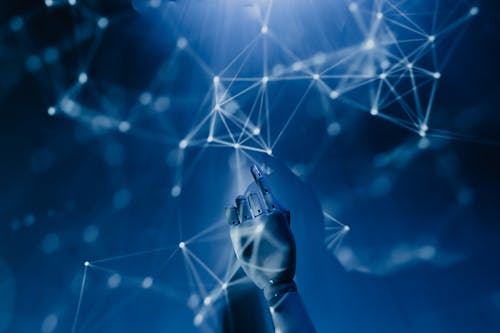
Introduction
Robots have transitioned from science fiction to reality, playing increasingly significant roles in various industries and aspects of daily life. As technological advancements accelerate, robots are poised to revolutionize society in profound ways. This article explores the current state of robotics, anticipates future developments, and examines the potential impacts—both positive and challenging—of robots on individuals, industries, and society at large.
Understanding Robots: From Automation to Artificial Intelligence
Robots encompass a broad spectrum of machines designed to perform tasks autonomously or semi-autonomously. They range from industrial robots used in manufacturing to sophisticated AI-powered machines capable of learning and adapting in real-time. Understanding the evolution of robotics provides insights into their future trajectory and societal implications.
1. Types of Robots
- Industrial Robots: Used in manufacturing and assembly lines to automate repetitive tasks such as welding, painting, and assembly.
- Service Robots: Designed for tasks outside of manufacturing, including cleaning robots, medical robots for surgery, and robots in hospitality and customer service.
- AI and Autonomous Systems: Incorporate artificial intelligence and machine learning to navigate complex environments, make decisions, and interact with humans.
2. Technological Advancements
- Artificial Intelligence: AI enables robots to analyze data, learn from experience, and make decisions independently, enhancing their capabilities in various domains.
- Sensor Technology: Advances in sensors enable robots to perceive and interact with their environment more accurately and safely.
- Human-Robot Interaction: Developments in natural language processing and gesture recognition facilitate seamless communication and collaboration between humans and robots.
The Impact of Robots on Industries
Robots are already transforming industries by improving efficiency, productivity, and safety. Their integration into various sectors is reshaping workflows and business models, with implications for employment and economic growth.
1. Manufacturing and Automation
- Increased Efficiency: Robots streamline production processes, reduce errors, and enhance product quality in manufacturing environments.
- Labor Displacement: Automation can lead to job displacement in certain industries, prompting discussions about workforce reskilling and job creation in emerging fields.
2. Healthcare and Medical Robotics
- Surgical Robots: Assist surgeons with precision and minimally invasive procedures, reducing recovery times and improving patient outcomes.
- Assistive Robots: Aid in patient care, rehabilitation, and elderly assistance, addressing healthcare challenges and improving quality of life.
3. Agriculture and Robotics
- Precision Farming: Robots and drones automate tasks such as planting, monitoring crop health, and applying fertilizers and pesticides, optimizing agricultural practices and resource management.
- Harvesting Robots: Designed to harvest crops efficiently and address labor shortages in agriculture.
Societal Implications and Challenges
As robots become more integrated into society, they raise ethical, social, and economic questions that require careful consideration and proactive measures.
1. Ethical Considerations
- Privacy and Surveillance: Concerns about data privacy and surveillance arise as robots collect and analyze personal information in various contexts.
- Autonomous Decision-Making: Questions about accountability and ethical decision-making in autonomous systems, particularly in critical domains like healthcare and transportation.
2. Job Displacement and Employment
- Skills Gap: Automation may lead to job displacement in certain sectors, highlighting the importance of reskilling and upskilling workers for emerging roles.
- New Job Opportunities: Robots create new job opportunities in robotics design, maintenance, programming, and oversight, contributing to a shifting employment landscape.
3. Economic Impact
- Productivity Gains: Increased efficiency and productivity driven by robots can stimulate economic growth and innovation in industries.
- Income Inequality: Concerns about income inequality arise as automation affects job markets differently, potentially widening socioeconomic disparities.
Robots in Everyday Life: Future Applications and Scenarios
Looking ahead, robots are expected to play increasingly diverse roles in everyday life, transforming how we live, work, and interact with our surroundings.
1. Smart Homes and Domestic Robots
- Household Assistants: Robots capable of performing household chores such as cleaning, cooking, and managing home security.
- Personal Assistants: AI-powered robots that schedule appointments, manage tasks, and provide personalized recommendations based on user preferences.
2. Transportation and Autonomous Vehicles
- Self-Driving Cars: Autonomous vehicles equipped with AI and sensors navigate roads safely, potentially reducing accidents and improving traffic flow.
- Delivery Robots: Autonomous drones and robots deliver packages and goods, enhancing logistics and last-mile delivery services.
3. Education and Learning
- Robotics in Education: Robots facilitate interactive and personalized learning experiences in classrooms, promoting STEM education and skills development.
- Tutoring and Assistance: AI-powered robots assist students with tutoring, homework help, and adaptive learning strategies.
Anticipating Future Developments and Challenges
The future of robotics promises continued innovation and advancements across various domains, presenting opportunities and challenges for society.
1. Emerging Technologies
- Advancements in AI: Enhanced AI capabilities enable robots to learn, adapt, and interact more effectively in dynamic environments.
- Soft Robotics: Developments in soft robotics and flexible materials enable robots to perform delicate tasks and navigate complex terrain.
2. Regulatory Frameworks and Governance
- Ethical Guidelines: Establishing ethical guidelines and regulatory frameworks to ensure responsible development, deployment, and use of robotics and AI technologies.
- International Collaboration: Global cooperation on standards, safety protocols, and data governance to address transnational challenges and promote innovation.

Conclusion: Embracing the Robotic Revolution
As robots become increasingly integrated into society, embracing their potential while addressing associated challenges is crucial for shaping a future where technology enhances human well-being and fosters sustainable development. By promoting innovation, ethical considerations, and inclusive growth, we can harness the transformative power of robots to create a more connected, efficient, and equitable world. As we navigate the complexities of the robotic revolution, collaboration across disciplines and proactive governance will be essential in maximizing the benefits of technology while mitigating its risks. Together, we can embrace the promise of robotics to redefine industries, enhance human capabilities, and pave the way for a future where innovation serves the greater good.














